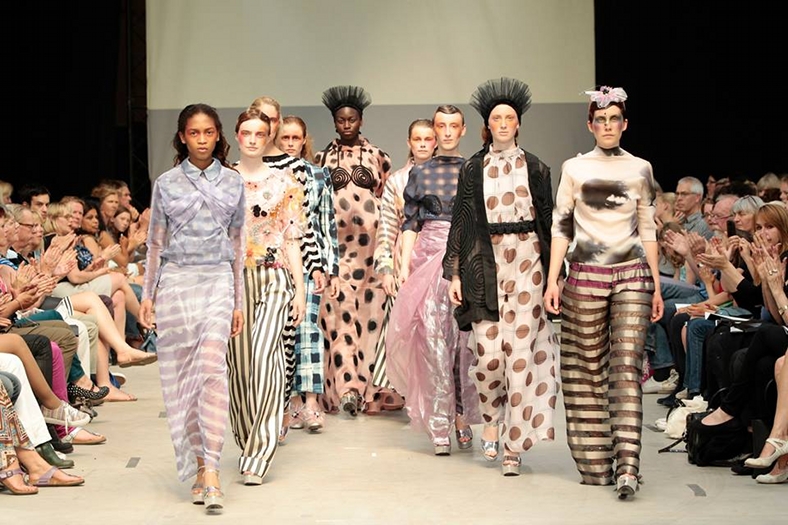- Participant 2013 Henriette Tilanus

Photo: Peter Stigter
Why did you decide to study fashion design?
I can’t remember really wanting to be a fashion designer. But looking back at my childhood I always made other worlds by building tents and dressing up and play all day long. Later on I realised that I wanted to learn how to translate my atmospheres into shape, material and colour and I felt that I fitted the best and could learn most at the academy in Arnhem.
Name one of your inspirations
My ideas come from a poetic image in my mind combined with things I see in daily life. One day, when I did my internship in London I saw an old lady on the street with pink hair and a transparent headscarf. Things like these I collect in my mind and become a new story. I like to combine these images with my own material. In a way I try to paint with my materials and fabrics.
What will be your next step after Lichting?
My classmates and I are going to Paris during the fashion week in the fall as the fashion collective ‘The Much Much’, there we will present ourselves with a pop-up showroom. Besides this I want to see and learn as much as possible. I am not sure yet what I am going to do exactly after summer. But in the end I would love to work together with other people and make new, interesting and beautiful textiles/prints/designs/exhibitions/costumes that tell a story.
Working for Dries van Noten would be a dream to start working on.
Let the dust settle
My graduation collection ‘Let the dust settle in’ is inspired on the stylish world of Lady Edith Sitwell. An eccentric writer from the early twenties with an uncanny sense for drama and style. Cecil Beaton’s portraits of Lady Sitwell in her garden and house showcase her love of art but also shows a glimpse of loneliness. I envision this loneliness to be a consequence of her misunderstood beautiful creative mind.
In my perception, the world needs these creative visionaries like water and air.
My collection is a tribute to her and other kindred spirits. I collected imagery of the Lady’s outfits, interior, garden and society life and studied her poems. I imagined her in today’s time, sitting in her beautiful ancient house but part of a modern world. The prints of her outfit would have been bleached and partly devoured by moths. Her embroideries are frayed and all of it is covered in a small layer of dust.
I started experimenting with textiles; I embroidered on plastics and hand painted checks, dots and bleached stripes on denim. I ripped out threads, knitted parts and created abstract flowers from stuff I found in my atelier and in the streets. These textile experiments I translated into a womens collection; modern but eccentric, original and outspoken but wearable and up-to-date.




